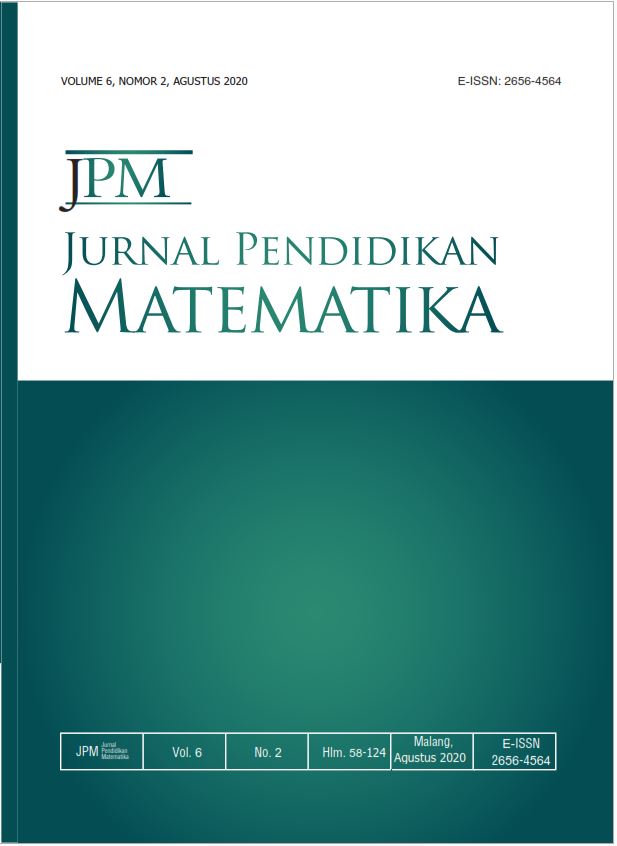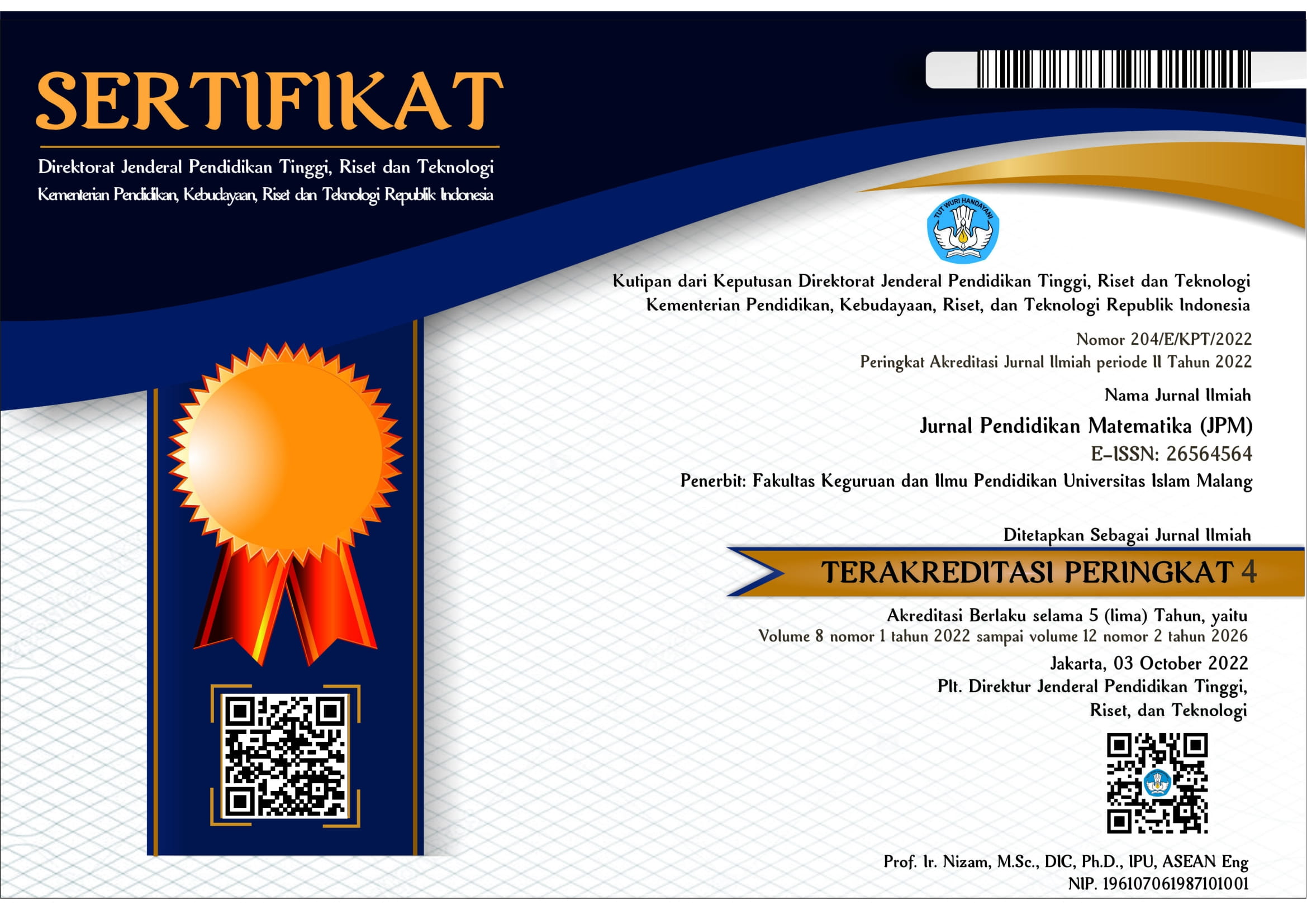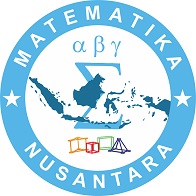KEMAMPUAN BERPIKIR KRITIS SISWA DALAM MEMECAHKAN MASALAH MATEMATIKA
DOI:
https://doi.org/10.33474/jpm.v6i2.6606Keywords:
Berpikir Kritis, Kemampuan Berfikir Kritis, Memecahkan Masalah Matematika,Abstract
ABSTRAK
Salah satu kompetensi penting yang dibutuhkan siswa dalam menghadapi perkembangan pendidikan di abad ke-21 adalah kemampuan berfikir kritis. Dengan memiliki kemampuan ini, siswa dapat menyelesaikan berbagai masalah dalam kehidupan sehari-hari menggunakan pemikiran yang rasional dan kritis. Menindaklanjuti hal tersebut maka perlu melakukan penelitian untuk mengukur kemampuan berfikir kritis siswa. Oleh karena itu, penelitian ini bertujuan untuk menganalisis kemampuan berfikir kritis siswa melalui pemberian masalah matematika. Penelitian ini merupakan penelitian kualitatif-deskriptif. Instrumen penelitian berupa satu masalah matematika pada materi geometri dan wawancara. Masalah matematika ini diberikan kepada 23 siswa kelas X MIPA 2. Hasil pekerjaan siswa dianalisis menggunakan indikator kemampuan berfikir kritis yang ditetapkan oleh peneliti, antara lain: interpretasi, analisis, evaluasi, dan inferensi. Dari hasil analisis tersebut diperoleh bahwa: (a) siswa yang memenuhi indikator interpretasi sebanyak 86,9% (20 siswa dapat melakukan interpretasi dengan baik), (b) siswa yang memenuhi indikator analisis sebanyak 47,8% (11 siswa dapat melakukan analisis dengan baik), dan (c) siswa yang memenuhi indikator evaluasi dan inferensi sebanyak 0% atau tidak ada siswa yang memenuhi indikator evaluasi dan inferensi. Berdasarkan hasil penelitian dapat disimpulkan bahwa kemampuan berfikir kritis siswa masih rendah yang terlihat pada belum tercapainya indikator analisis, evaluasi, dan inferensi dengan baik.
Â
Kata Kunci: Berpikir Kritis, Kemampuan Berfikir Kritis, Memecahkan Masalah Matematika,
 Â
ABSTRACT
One of the important competencies which needed by students in facing the development of education in the 21st century is critical thinking skill. By having this skill, students can solve various contextual problems using rational and critical thinking. To respond that statment, it is necessary to make research to measure students' critical thinking skills. Therefore, this study aims to analyze students' critical thinking skills through practice mathematical problems. This study is a qualitative-descriptive research. The instruments is a mathematical problem especially geometry and interviews. This mathematical problem was given to 23 students of Class X MIPA 2. The results of students’ work sheet were analyzed using indicators of critical thinking skills set by the researchers, including: interpretation, analysis, evaluation, and inference. From the results of the analysis it was found that: (a) students who satisfy the interpretation indicator were 86.9% (20 students were able to interpret it well), (b) students who satisfy the analysis indicators were 47.8% (11 students could do the analysis by well), and (c) students who satisfy the evaluation and inference indicators are 0% or none of the students satisfy the evaluation and inference indicators. Based on the results of the study it can be concluded that students’ critical thinking skill is still low as seen in not yet reached indicators of analysis, evaluation, and inference by well.
Â
Â
Keywords: Critical Thinking, Critical Thinking Skills, Solving Mathematical ProblemReferences
As’ari, A, R. (2016). Tantangan Pengembangan Profesionalisme Guru dalam Rangka Membelajarkan Matematika di Abad ke-21 dan Membangun Karakter Peserta Didik. Dipublikasikan di https://www.researchgate.net/publication/311067194.
As’ari, A, R., Mahmudi, A., & Nuerlaelah., E. (2017). Our Prospective Mathematic Teachers Are Not Critical Thinkers Yet. Journal on Mathematics Education, 8(2): 145-156.
Basri, H., Purwanto, As’ari, A. R., & Sisworo. (2019). Investigating Critical Thinking Skill of Junior High School in Solving Mathematical Problem. International Journal of Instruction, 12(3): 745-758.
Cahyono, B. (2017). Analisis Ketrampilan Berfikir Kritis Dalam Memecahkan Masalah Ditinjau Perbedaan Gender. Aksioma, 8(1): 50-64.
Chukwuyenum, A. N. (2013). Impact of Critical Thinkingon Performance in Mathematics among Senior Secondary School Students in Lagos State. IOSR Journal of Reasearch & Method in Education (IOSR-JRME, 3(5): 18-25.
Duron, R., Limbach, B., & Waugh, W. (2006). Critical Framework for Any Dicipline. International Journal of Teaching and Learning in Higher Education, (online), 17(2): 160-166.
Ennis, R. (1985). Curriculum for Critical Thinking Developing Minds: A Resource Book For Teaching Thinking. Alexandria: Association for Supervision and Curriculum Development.
Ennis, R. H. (2011). The Nature of Critical thinking: An Outline of Critical Thinking Dispositions and Abilities. Illinois: University of Illinios, (online), (https://www.google.com/url?sa=t&rct=j&q=&esrc=s&source= web&cd=1&cad=rja&uact=8&ved=0ahUKEwj6uZaYheTSAhVBrI8KHcagCOMQFggbMAA&url=http%3A%2F%2Ffaculty.education.illinois.edu%2Frhennis%2Fdocuments%2FTheNatureofCriticalThinking_51711_000.pdf&usg=AFQjCNHAs1qGj67PwzGZuFM6ygKJg_A9w&sig2=VjpSW2GG102bFQdPqU V3_w&bvm=bv.149760088,d.c2I), diakses tanggal 10 November 2019.
Facione, P. A. (2018). Critical thinking: What it Is and Why It Counts. Hermosa Beach: Insight Assessment, (online), (https://www.insightassessment.com/content/download/1176/7580/file/what&why.pdf), diakses tanggal 15 November 2019.
Felder, R. M., & Brent, R. (2016). Teaching and Learning STEM A Pratical Guide. USA: Jossey-Bass A wiley Brand.
Filah, A., N., Dafik, & Kusno. (2018). The Analysis of Students’ Critical Thinking Skills in Solving the Generalization Problem of Mathematics Series. The International Journal of Social Sciences and Humanities Invention, 5(1): 4314-4321.
Firdaus, Kailani, I., Bakar, M., N., B., & Bakry. (2015). Developing Critical Thinking Skills of Students in Mathematics Learning. Journal of Education and Learning, 9(3): 226-236.
Hidayanti, D., As’ari, A. R., & Chandra, T. D. (2016). Analisis Kemampuan Berpikir Kritis Siswa SMP Kelas IX Pada Materi Kesebangunan. Konferensi Nasional Penelitian Matematika dan Pembelajarannya (KNPMP I)(Prosiding): 276-285.
Kemdikbud. (2016). Peraturan Menteri Pendidikan dan Kebudayaan Republik Indonesia Nomor 20 Tahun 2016 Tentang Standar Proses Pendidikan Dasar dan Menengah. Jakarta: Kemdikbud.
Parameswari, P., Chandra, T. D., & Susiswo. (2018). Pelaksanaan Scaffolding untuk Mengatasi Kesulitan Siswa dalam Menyelesaikan Masalah PtLSV. Jurnal Pendidikan: Teori, Penelitian, & Pengembangan, 3(5): 656-670.
Rahman, M., M. (2019). 21st Century Skill “Problem Solvingâ€: Defining the Concept. Asian Journal of Interdisciplinary Research, 2(1): 71-81.
Syarifah, T. J., Usodo, B., & Riyadi. (2018). Higher Order Thinking (HOT) Problems To Develop Critical Thinking Ability And Student Self Efficacy in Learning Mathematics Primary Schools. SHEs: Conference Series, 1(1): 917-925.
Widana, I. wayan, Adi, S., Herdiyanto, Abdi, J., Marsito, & Istiqomah. (2019). Modul Penyusunan Soal HOTS. Kementrian Pendidikan dan Kebudayaan: Jakarta.






_-_Copy.jpg)
.jpg)
.jpg)










